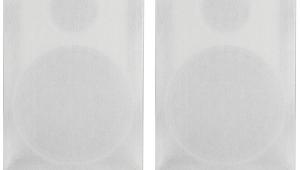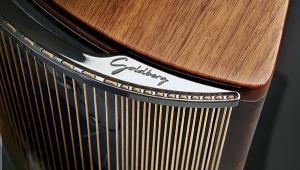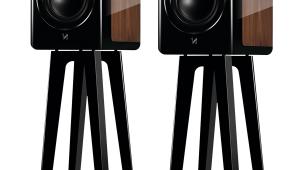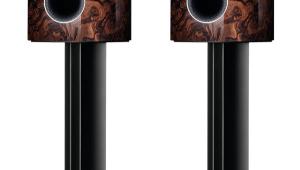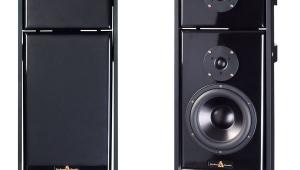Spendor A6 (£2000)
As well as being the smallest speaker in this test, the Spendor A6 is also the simplest. Like the Dynaudio it is a two-way design but with only one bass-mid driver, not two. Spendor manufactures its own
bass-mid units, this nominally 180mm version (effective cone diameter about 135mm) claiming low coloration and high power handling, its most eye-catching feature being that it has a transparent cone. Crossover to the soft dome tweeter is at 4kHz, and unusually is linear-phase.
If you know your Spendor history you’ll recall that the company was one of the first to address the issue of reflex port turbulence, initially by fitting a foam ring to the port lip. The A6 has a fourth-generation linear-flow port design, the outlet of which is rectangular and located at the bottom of the rear panel, immediately beneath the single pair of WBT input terminals. This positioning is sensible as near-field measurement shows the port to have significant unwanted output above its working range.
Although the cabinet design is externally unremarkable – four veneer finishes are available: black ash, cherry, wenge and light oak – internally it uses a novel approach to controlling ‘cabinet talk’ that Spendor calls Dynamic Damping. Small, light constrained-layer dampers are applied at key points to dissipate vibration. Round steel plates in the base carry the supplied spikes to maximise rigidity and enhance stability by placing them close to the cabinet edges, but the spikes proved too thick for the lightweight A6 to punch them through my carpet to the floor. So the spiked platforms were employed to ensure a firm foundation.
SMOOTHED OVER
Still – and despite the critical acclaim it has received elsewhere – the A6 failed to shine in the company of this group. On the Widor clarinet piece there was significantly less depth and air to the image than I am used to hearing, and the overall sound was softened slightly, conveying less impact and eliciting less interest in the musical performance. This sense of flattened dynamic was carried over to the Davenport too, where there was a diminution of sparkle and a lessening of rhythmic drive.
On the Alison Krauss track transparency was compromised, offering a clouded insight into the construction of the track, and again my notes say ‘smoothed over, dynamically flattened.’
VITAL SIGNS
The same was true of Clapton’s ‘Double Trouble’, which lacked much of the vital rough edge I know this live recording possesses. In its defence, the A6 is the second-cheapest speaker in this group. However the one model which undercuts it in price, the B&W CM9, offers more, both physically and sonically.
Originally published in the August 2009 issue










